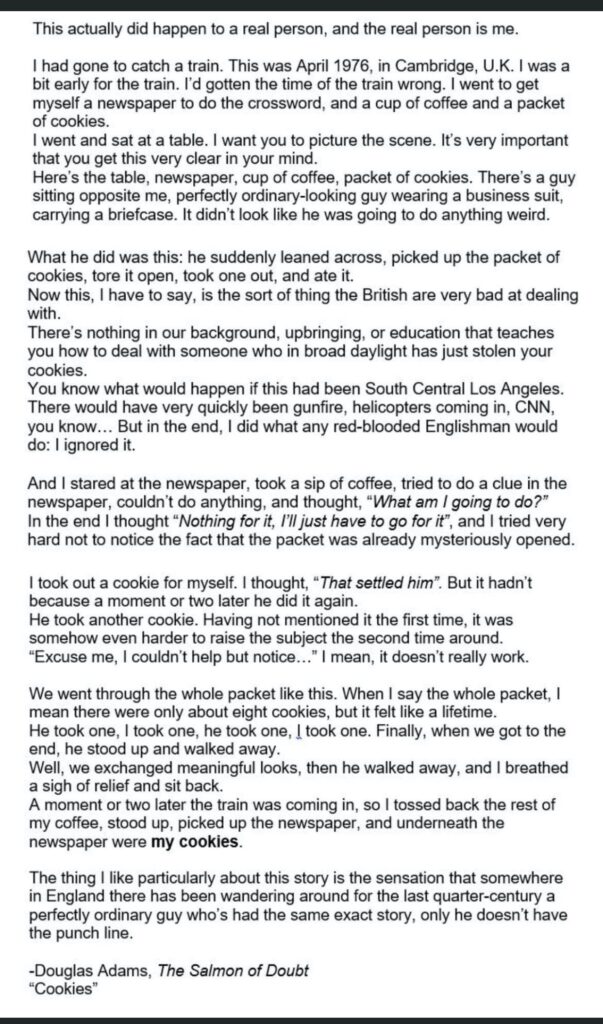I’m a fan of Ozan Varol, author of such books, as “Think Like A Rocket Scientist” and “Awaken Your Genius.” I just finished the latter, which Varol reads himself. I usually prefer when the author reads their own work.
At one point in the book — maybe in the “Detecting Bullshit” section, or maybe it was in “Look Where Others Don’t” — he makes a strong argument, with numerous examples, of how the majority isn’t always right. Honestly, it seems to me that anyone is so epitome to “group think” — no matter how enlightened or well-meaning.
For instance, Varol points out how one of the Western world’s most well-recognized and oft-quoted poems is usually completely misunderstood.
You know the line I’m talking about — the one about “the road less traveled.” It’s often touted as poetic inspiration to walk your own path — to zig when others zag — to be yourself — follow your bliss. Pick your own woo-woo buzz-phrase.
The actual lines from the poem go like this:
Two roads diverged in a wood, and I—
I took the one less traveled by,
And that has made all the difference.
But Varol encourages us to dig into the poem a little deeper. Here’s the whole thing:
Two roads diverged in a yellow wood,
And sorry I could not travel both
And be one traveler, long I stood
And looked down one as far as I could
To where it bent in the undergrowth;
Then took the other, as just as fair,
And having perhaps the better claim,
Because it was grassy and wanted wear;
Though as for that the passing there
Had worn them really about the same,
And both that morning equally lay
In leaves no step had trodden black.
Oh, I kept the first for another day!
Yet knowing how way leads on to way,
I doubted if I should ever come back.
I shall be telling this with a sigh
Somewhere ages and ages hence:
Two roads diverged in a wood, and I—
I took the one less traveled by,
And that has made all the difference.
So, the first verse is pretty much fits the common conception of the poem.
The first three lines of the second verse continue along the same lines. But then in the fourth and fifth lines, it takes a turn:
Though as for that the passing there
Had worn them really about the same,
Wait. What? Is he saying that, after is taking that other road, the two paths were worn about the same? Hmm… The first two lines of the third verse elaborate:
And both that morning equally lay
In leaves no step had trodden black.
Seems to be he’s saying that, by morning, both paths looked pretty much untrodden. No difference.
And then, he seems to be second-guessing himself. I Sense regret; doubt.
Oh, I kept the first for another day!
Yet knowing how way leads on to way,
I doubted if I should ever come back.
I shall be telling this with a sigh
Somewhere ages and ages hence:
And now, with all of that context, we arrive again at the punchline that is most often quoted:
Two roads diverged in a wood, and I—
I took the one less traveled by,
And that has made all the difference.
Seems to me now that Frost was being a bit nihilistic— maybe even sarcastic. He thought he was taking the road less traveled by, but really all roads are about the same.
This little exercise is surely fodder for many a college literary class. I am no literary scholar, and maybe I’m still getting it all wrong.
The point is that maybe most other people are, too.
Are you?




